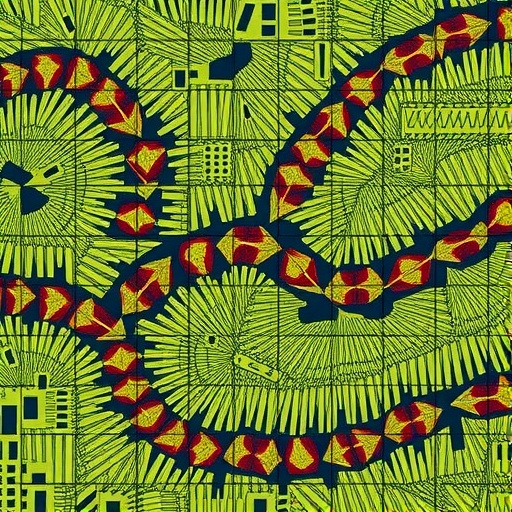In recent years, the issue of invasive species has garnered significant attention from environmental scientists and policymakers alike. Among these invasive species, Spartina alterniflora, commonly known as smooth cordgrass, has emerged as a prominent subject of study due to its rapid growth and ecological implications. This species is native to the eastern United States but has become widespread in various coastal regions around the world. Its proliferation poses a threat to native ecosystems by altering habitats and competing for resources. A notable study by Wang, Su, and Sun uncovers a progressive technique for mapping this invasive plant by utilizing tidal imagery and its phenological characteristics.
The significance of mapping Spartina alterniflora cannot be understated, particularly when considering its impact on coastal degradation and ecosystem dynamics. Traditional mapping methods have required extensive time and resource investment, highlighting a clear need for innovation in this area. The study’s authors have sought to address this gap by developing a rapid and automated mapping approach that not only enhances efficiency but also improves the accuracy of monitoring efforts. The implications of this advancement are vast, providing new tools to combat the spread of Spartina alterniflora and to manage coastal ecosystems more effectively.
Utilizing tidal imagery in conjunction with phenological characteristics offers a two-pronged approach to this research. Tidal imagery, capturing the dynamic relationship between water levels and vegetation, is essential for accurately assessing the extent of Spartina alterniflora coverage. The researchers focused on the various stages of tidal flooding which dramatically influence the growth patterns of this grass. By analyzing images captured during different tidal conditions, it becomes feasible to develop a comprehensive understanding of where Spartina alterniflora thrives the most.
Phenological characteristics further enhance the study’s efficacy. These characteristics refer to the seasonal life cycle events of plants, including flowering and leaf-out periods. Collecting data on these traits allows for a nuanced understanding of the life cycle of Spartina alterniflora in its invaded habitats. The seasonality of this species shows a distinct pattern that varies with tidal influences, thus creating a unique opportunity to capture its spatial distribution through automated methods effectively.
The automated nature of the mapping method presented in the study signifies a shift towards technology-driven solutions in ecological research. The combined methodologies facilitate real-time data collection and analysis, minimizing human error and maximizing the efficiency of monitoring efforts. This technology-driven approach also opens the door for integrating other forms of machine learning and artificial intelligence into environmental studies, paving the way for future advancements in ecological research.
But what makes this study stand out? The integration of multiple data sources provides a rich tapestry of information that not only identifies the presence of Spartina alterniflora but also tracks its changes over time. This longitudinal approach is critical, as it allows scientists to understand the invasive species’ growth patterns correlating to environmental changes and human impact on coastal regions. By mapping out these patterns, ecologists can identify vulnerable regions and contribute to more informed conservation strategies.
The results attained from this rapid mapping technique demonstrate its efficacy over previous methods, establishing a new benchmark in environmental assessments. Among the most impressive outcomes is the potential for scalability. The methodologies developed are not limited to Spartina alterniflora alone; they can be adapted for other invasive species and plant communities. This wider application could exponentially amplify conservation efforts across various ecosystems globally, demonstrating the broader relevance of the research.
Researchers expect that the arrival of this automated mapping system will act as a wake-up call to conservationists and policymakers, emphasizing the importance of proactive measures against invasive species. The world is becoming increasingly aware of how climate change contributes to species shifts and habitat loss. By proactively monitoring the spread of Spartina alterniflora and similar species, we can generate more effective policies aimed at preserving biodiversity in coastal ecosystems.
The study also highlights an important aspect of collaboration between various fields, combining ecology with technology. The cross-disciplinary collaboration has proven essential in not only understanding ecological impacts but also crafting innovative solutions to age-old problems. The merging of scientific expertise with advanced imaging technologies not only showcases the potential of interdisciplinary approaches, but also serves as a model for future research endeavors in environmental sciences.
Furthermore, the implications of this study extend beyond the academic world. Engaging the public and raising awareness about the challenges posed by invasive species can facilitate grassroots conservation efforts. By leveraging social media and other platforms for outreach, scientists can motivate local communities to monitor coastal environments more closely, thereby transforming observers into active participants in ecological stewardship.
In conclusion, the groundbreaking work showcased by Wang, Su, and Sun contributes significantly to our understanding and management of coastal ecosystems threatened by invasive species like Spartina alterniflora. Through a combination of tidal imagery, phenological characteristics, and automated processes, this study not only sets a new standard in ecological mapping but also strengthens the call for proactive and collaborative conservation strategies. As the fight against invasive species intensifies, such innovative approaches will be crucial in safeguarding the integrity of our natural habitats for future generations.
Subject of Research: Invasive species monitoring and mapping, particularly focusing on Spartina alterniflora in coastal ecosystems.
Article Title: Rapid and automated mapping method of Spartina alterniflora combines tidal imagery and phenological characteristics.
Article References:
Wang, R., Su, Y., Sun, X. et al. Rapid and automated mapping method of Spartina alterniflora combines tidal imagery and phenological characteristics.
Environ Monit Assess 197, 1136 (2025). https://doi.org/10.1007/s10661-025-14580-8
Image Credits: AI Generated
DOI: 10.1007/s10661-025-14580-8
Keywords: Spartina alterniflora, invasive species, tidal imagery, phenological characteristics, automated mapping, ecological monitoring.




